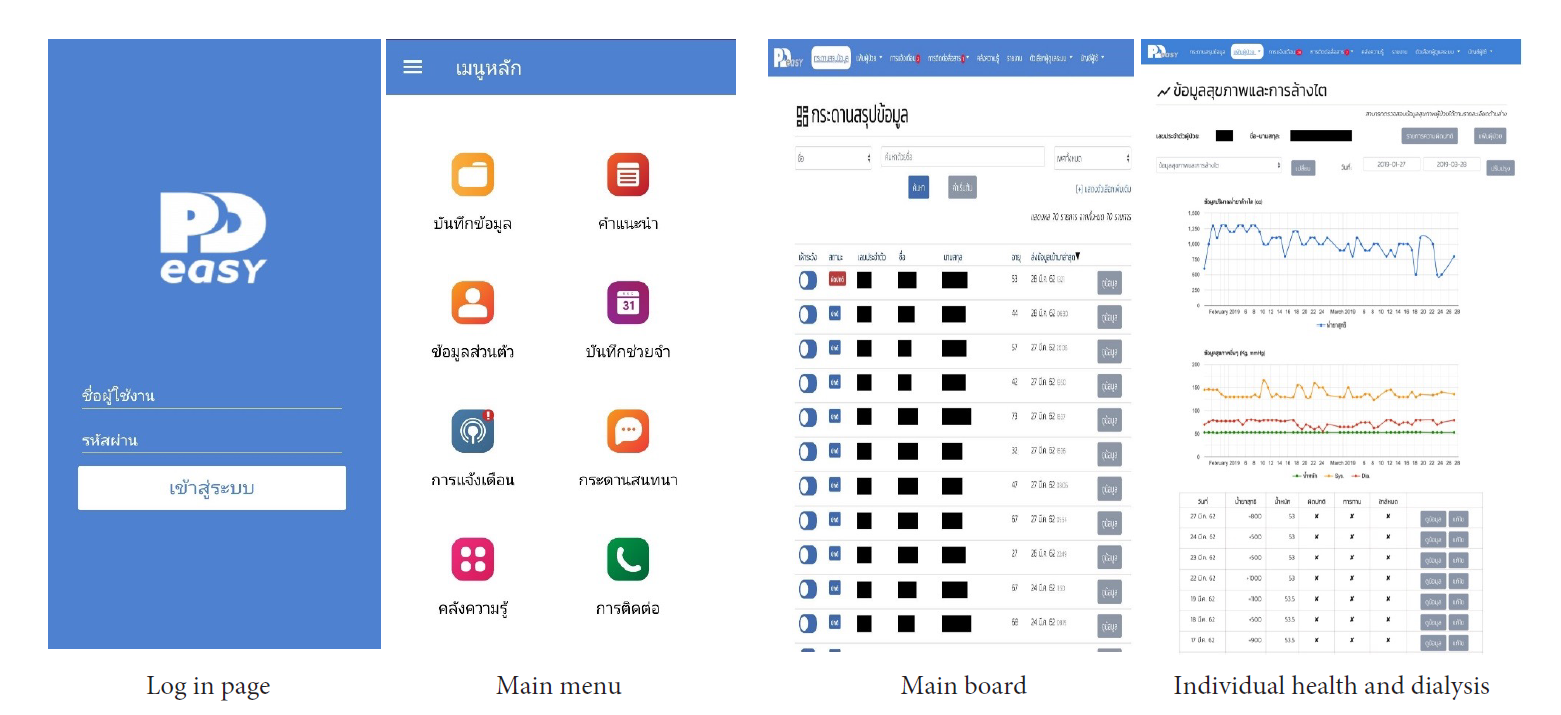Telehealth Service for Patients Receiving Continuous Ambulatory Peritoneal Dialysis: A Pilot Study
DOI:
https://doi.org/10.33192/smj.v75i1.260529Keywords:
PD Telehealth, peritoneal dialysis, telehealthAbstract
Objective: This study aimed to assess the feasibility and acceptability of delivering a telehealth intervention, called PD Telehealth, for improving health outcomes among Thai patients receiving continuous ambulatory peritoneal dialysis (CAPD).
Materials and Methods: This pilot study enrolled 104 patients receiving CAPD, who were randomly classified into two groups: PD Telehealth group (PD Telehealth service plus usual care; n = 52) and usual care group (usual care only; n = 52). The 6-month telehealth service was provided to participants to deliver self-management support and telemonitoring while they received home-based treatment. Further, the repeated measures mixed analysis of variance test was used to assess health outcomes at baseline, 3 months, and 6 months. Additionally, feasibility and acceptability were assessed.
Results: Notably, the measured baseline characteristics of the two groups were not different. Regarding quality of life, a significant interaction effect was observed on two domains of the 36-Item Short Form Survey-general health (p = 0.002) and reported health transition (p = 0.018). However, self-management and clinical outcomes did not differ significantly between the two groups over 6 months. The PD Telehealth group demonstrated high acceptability and feasibility of the application.
Conclusion: The PD Telehealth service has been demonstrated to be feasible and acceptable for providing care to patients receiving CAPD. However, there were no significant differences in the main outcomes of the study. Further research studies involving a larger and more diverse sample population and conducted over a longer period are needed.
References
Kanjanabuch T, Takkavatakarn K. Global dialysis perspective: Thailand. Kidney360. 2020;1:671-75.
Mehrotra R, Devuyst O, Davies SJ, Johnson DW. The current state of peritoneal dialysis. J Am Soc Nephrol. 2016;27:3238-52.
Karopadi AN, Mason G, Rettore E, Ronco C. The role of economies of scale in the cost of dialysis across the world: a macroeconomic perspective. Nephrol Dial Transplant. 2014;29:885-92.
Chuasuwan A, Lumpaopong A. Thailand renal replacement therapy year 2020 [Internet]. Bangkok: The Nephrology Society of Thailand, 2020 [cited 2022 Jun 16]. Available from: https://www.nephrothai.org/wp-content/uploads/2021/10/Final-TRT-report-2020.pdf.
Lunney M, Lee R, Tang K, Wiebe N, Bello AK, Thomas C, et al. Impact of telehealth interventions on processes and quality of care for patients with ESRD. Am J Kidney Dis. 2018;72:592-600.
Yang Y, Chen H, Qazi H, Morita PP. Intervention and evaluation of mobile health technologies in management of patients undergoing chronic dialysis: scoping review. JMIR MHealth UHealth. 2020;8:e15549.
Lew SQ, Sikka N, Thompson C, Magnus M. Impact of remote biometric monitoring on cost and hospitalization outcomes in peritoneal dialysis. J Telemed Telecare. 2019;25:581-6.
Cartwright EJ, Goh Zs Z, Foo M, Chan CM, Htay H, Griva K. eHealth interventions to support patients in delivering and managing peritoneal dialysis at home: a systematic review. Perit Dial Int. 2021;41:32-41.
Milan Manani S, Baretta M, Giuliani A, Virzì GM, Martino F, Crepaldi C, et al. Remote monitoring in peritoneal dialysis: benefits on clinical outcomes and on quality of life. J Nephrol. 2020;33:1301-8.
Rattana-umpa N, Sriyuktasuth A, Jeungsmarn P. Problems with health services and assessment of telehealth needs for peritoneal dialysis: patient, caregiver, and health professional’s perspectives. Nurs Sci J Thail. 2022;40:140-56.
Cohen J. Statistical Power Analysis for the Behavioral Science: 2nd ed. Hillsdale, NJ: Erlbaum, 1988.
Varitsakul R, Sindhu S, Sriyuktasuth A, Viwatwongkasem C, Himmelfarb CRD. The relationships between clinical, sociodemographic and self-management: factors and complications in Thai peritoneal dialysis patients. Ren Soc Australas J. 2013;9:85.
Aiyasanon N, Premasathian N, Nimmannit A, Jetanavanich P, Sritippayawan S. Validity and reliability of CHOICE Health Experience Questionnaire: Thai version. J Med Assoc Thai. 2009;92:1159-66.
Dey V, Jones A, Spalding EM. Telehealth: acceptability, clinical interventions and quality of life in peritoneal dialysis. SAGE Open Med. 2016;4:2050312116670188.
Harrington DM, Myers L, Eisenman K, Bhise V, Nayak KS, Rosner MH. The use of a tablet computer platform to optimize the care of patients receiving peritoneal dialysis: a pilot study. Blood Purif. 2014;37:311-5.
Kalantar-Zadeh K, Li PK, Tantisattamo E, Kumaraswami L, Liakopoulos V, Lui SF, et al. Living well with kidney disease by patient and care-partner empowerment: kidney health for everyone everywhere. Siriraj Med J. 2021;73:209-15.

Published
How to Cite
License

This work is licensed under a Creative Commons Attribution-NonCommercial-NoDerivatives 4.0 International License.
Users are free to share, copy, and redistribute all articles published in the Siriraj Medical Journal (SMJ) in any medium or format as long as you follow the following terms:
- Attribution — You must give appropriate credit, provide a link to the material, and indicate if changes were made. You may do so in any reasonable manner, but not in any way that suggests the publisher endorses you or your use.
- NonCommercial — You may not use the material for commercial purposes.
- NoDerivatives — If you remix, transform, or build upon the material, you may not distribute the modified material.
- No additional restrictions — You may not apply legal terms or technological measures that legally restrict others from doing anything the license permits.










